PKUBA路SectorScan | Where is the road ahead: A journey to learn from the new generation of Web3 games
As the chapter of the rebirth of the man of destiny in Black Myth: Wukong comes to an end, another journey of learning from the past has quietly entered the middle of the journey – this is the journey of the new generation of Web3 games (Web3 Game). As one of the most classic narratives of Web3, GameFi is gradually shifting from play to earn to play to play, focusing more on gameplay rather than emphasizing financial attributes. Just as Wukong grew up in the wind and rain and faced challenges, these Web3 games are also exploring their own true scriptures. As the first research report in the PKUBA路SectorScan series this semester, this report will focus on sorting out the Web3 game projects in each segment track that have the most potential to go viral like Black Myth: Wukong in 2024.
Hamster Kombat: A Web3 Exploration Tour of Mouse Hegemony
Hamster Kombat is a tap to earn Web3 game that combines development, combat, and social elements. Players can develop their own mice and participate in real-time battles to earn tokens and unique NFT rewards. The project has governance tokens and in-game tokens, the former for community decision-making and the latter for purchasing props and upgrades. On September 26, 2024, Hamster Kombat officially launched an airdrop, and its ecological token HMSTR was launched on more than a dozen mainstream exchanges such as Binance, OKX, and Bybit at the same time, creating the largest airdrop user scale to date with a user base of over 300 million.
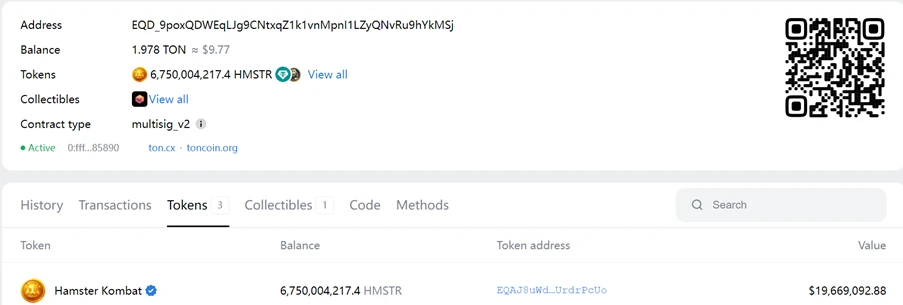
Players can improve the properties of mice in different ways, including training, feeding and upgrading; they can also put their own mice into the arena for real-time battles to compete for rankings and rewards. The project token is $HMSTR, which is mainly used for community decision-making and voting, purchasing props, upgrading mice, etc. In Hamster Kombat, the players exchange level depends on the game points balance, with a total of nine levels from bronze to grandmaster. It is worth noting that the success of Hamster Kombat is an atypical case. In March 2024, the game created a Telegram channel and went online without any investment background. There was little discussion on Twitter in the early days, but it gained a lot of traffic under the promotion of Notcoin. In May, Hamster Kombat had 15 million users and its Telegram channel ranked third in the world. Subsequently, the number of users surged to 300 million and the number of subscriptions reached 69 million, becoming the worlds number one. The main reason for the games success is its high playability – its diversified development system, real-time battle mechanism and social interaction elements allow players to improve the attributes of mice through training, feeding and upgrading, while participating in exciting real-time competitions and competing directly with other players. Compared with other games, Hamster Kombats unique tap to earn mechanism lowers the threshold for participation, allowing more players to easily get started and gain benefits. At the same time, the teams innovative strategies in promotion and social media interaction enable the game to quickly attract and retain players, thus standing out among Web3 games.

In addition, the team used savvy traffic-generating strategies, including daily news programs and social media interactions, to quickly increase the number of followers and views, thereby gaining recommendations on social media platforms.

However, Hamster Kombat also faces major challenges in airdrop distribution. With the rapid growth of the number of users, how to reasonably distribute airdrops has become a key issue. Previous large-scale airdrop experiences have mainly focused on millions of users, and Hamster Kombat did not design an effective anti-witch mechanism in the early stage, resulting in a large number of fake parties participating, which made it difficult to identify witches and may affect the rights and interests of real users. Although the official claim that the number of users has reached 300 million, the actual number of users who meet the airdrop qualifications is 131 million, and 2.3 million witch addresses have been found. Hamster Kombat emphasized that the game has banned the participation of these 2.3 million users due to cheating. In September 2024, Hamster Kombat announced its 2025 roadmap, focusing on the continued development of the game and community participation. Plans include launching new features and updates to enhance the gaming experience while expanding the NFT market and gaming ecosystem.
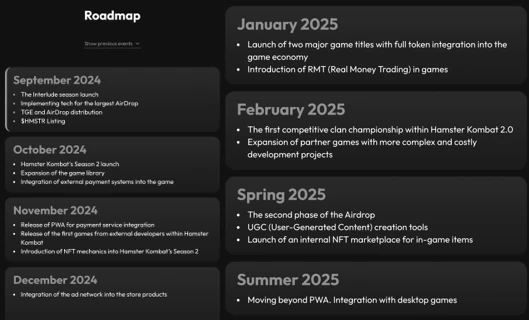
SERAPH: A dark horse in ARPG
SERAPH: In the Darkness is a dark fantasy style, NFT-based action ARPG Web3 game. Since the game was officially launched on the chain in November 2023 and the official season started, SERAPH has continued to be popular. According to DappRadar data, SERAPHs UAW (Unique Active Wallets) exceeded 1 M in the past 7 days, becoming the second in the #GameFi track. Txns data also rose accordingly. As a representative of the second-generation chain game, SERAPH has achieved an excellent result of 10,000+ registrations in the Alpha test in April 2023. The data of the 5 tests have repeatedly set new highs: the average DAU in the S 0 season (the 5th test) reached 15,000, the 14-day retention rate exceeded 30%, and it achieved millions of dollars in revenue, becoming a dark horse in the ARPG track.

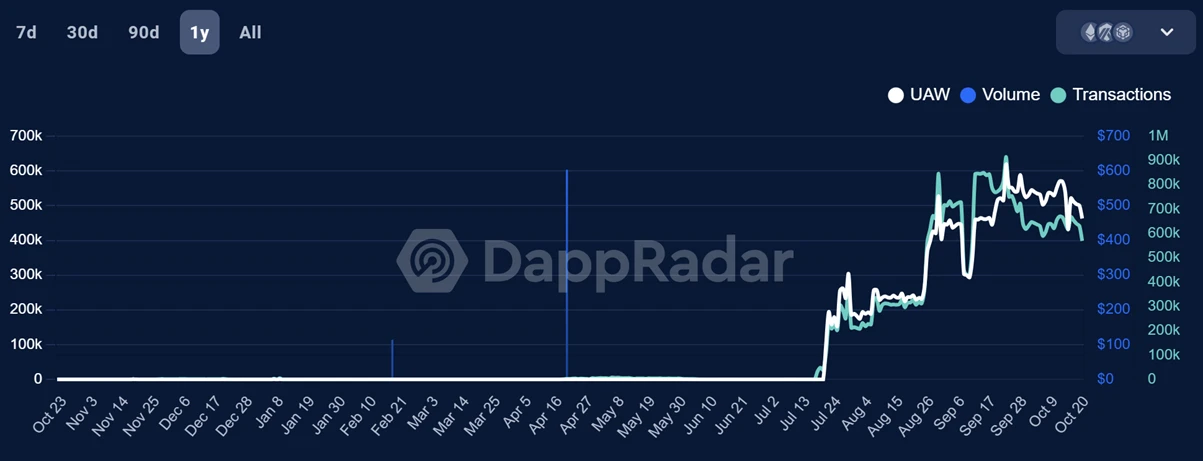
SERAPHs outstanding achievements are inseparable from the support of a strong team. The SERAPH team was incubated by the Korean game giant Actoz Soft (listed on Kosdaq) and has over 15 years of experience in developing dark-style games. After embracing Web3, the team has demonstrated amazing iteration capabilities: not only did they quickly learn the concepts, technical frameworks, and token economy of Web3, but they were also not limited to the exploration of pioneers and found a new positioning and entry angle for SERAPH. Its rich development experience across Web2 and Web3 also ensures that the game can be loved by both Web2 and Web3 players. In terms of funding, since SERAPH is backed by the resources of Web2 game giants, it did not adopt the model of raising funds from the community, but instead raised funds for development and used high-level games themselves to build community trust, which also reflects the teams confidence in its own game development level.
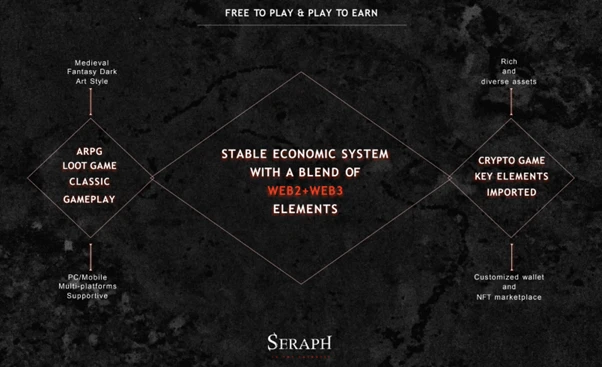
In terms of gameplay, SERAPH has inherited the classic dark-style equipment enhancement, character development and dungeon exploration gameplay, and has incorporated AI companions and various MMO elements. It has made many innovations, such as multiplayer teaming, PVP rankings and player trading markets, which have greatly improved the playability and sociality of the game. In terms of token economy, players can enter the game for free and have the opportunity to obtain rare assets through the game. At the same time, players can also directly use unique NFT equipment to produce Soul Spars. Soul Spars are widely consumed in the game, and there are multiple adjustment mechanisms to fight inflation and ensure the stable development of the game economy. In addition, SERAPH has set up seasonal rewards to encourage players to create exclusive equipment and promote the circulation and trading of equipment, thereby realizing a diversified and evolving economic ecology.
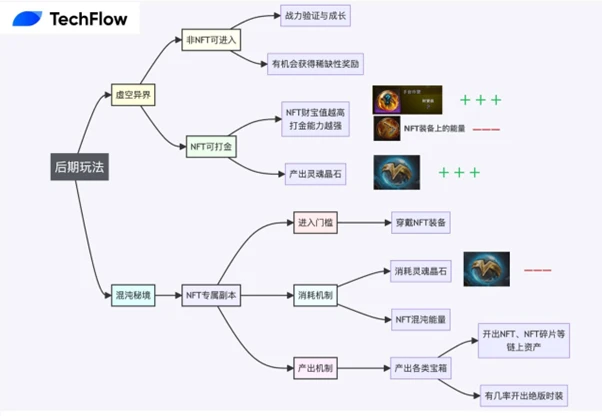
In terms of the design of the games token economic system, Seraph is different from the general Web3 games that adopt the dual-currency economic model. According to the white paper, Seraph will only launch a single token in the future. Although the current single-currency economic model is relatively stable, as the player base grows, how to maintain economic balance while mitigating the impact of inflation, the stable operation of the single-currency economic model will be a good opportunity for the team to demonstrate its innovation and management capabilities.
Parallel: A new attempt to break the circle of science fiction TCG, a strong competitor of Hearthstone
As one of the collectible card games (TCG), Parallel gives players ownership of their cards and other game assets through the power of NFTs, and can trade such assets between players like Yu-Gi-Oh! In October 2021, the project received a $50 million investment from Paradigm at a valuation of $500 million, and opened beta testing in February 2024. Subsequently, the company received $35 million in financing in March 2024, with more than 20 VCs including Solana Ventures, Distributed Global, and OSS Capital participating. Among the founding team, Sascha Mojtahedi, one of the six co-founders, has nearly 16 years of project development and operation experience, and three members are from the University of Waterloo in Canada. The team has a deep Canadian background. The main design team is mainly composed of former members of well-known studios such as Epic Games, Blizzard, and Riot Games, with good endorsements and design experience from large companies.
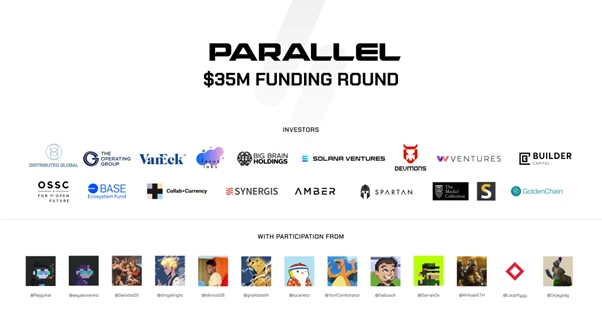
Compared with existing TCG card games, Parallel has unique highlights in the following dimensions: First, the world line in the game is based on science fiction themes, which is more distinctive than existing themes and can generate greater game popularity in the early stage. Secondly, in terms of gameplay, the core of the game revolves around building card decks, allowing players to focus on strengthening decks and PVP ranking battles to have fun. By designing a large number of cards and synergies between cards, Parallel provides players with many possibilities, allowing players to make full use of the complexity of the game to build the best game deck. Despite the large size of the deck library, Parallel pays great attention to the balance between cards, and allows the decomposition and synthesis of cards to construct any card that players need, which can attract enough free players to participate in building the game ecosystem. In terms of art, Parallel pays great attention to the texture of the cards and the immersive game experience. In contrast, most of other Web3 TCG card games are generated by AI, which makes it have a more distinctive game style among a number of blockchain card games. Therefore, Parallel has successfully become a catfish in the TCG card game, posing a considerable challenge to the existing TCG game ecosystem.
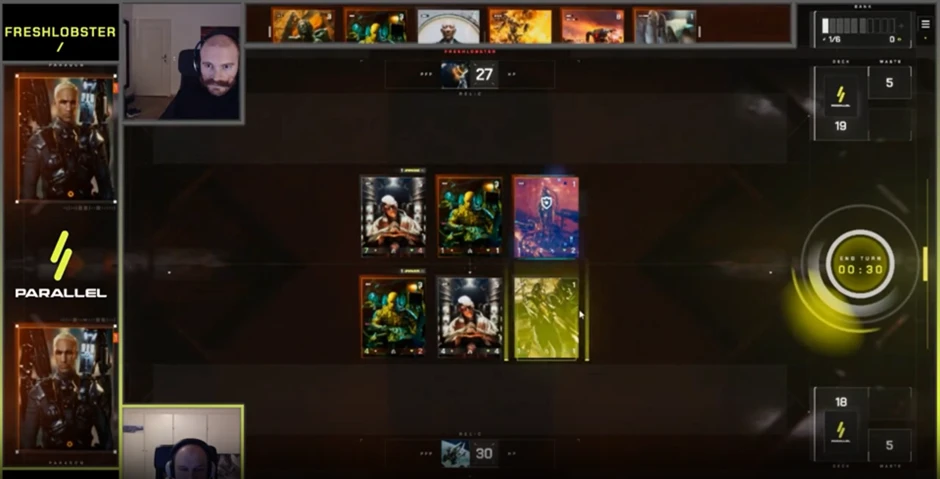
Although Parallel has successfully established itself in the field of TCG card games, there are still many challenges to becoming a game with a long life cycle and maintaining a large core player base. First, according to current player feedback, the games UI design has some defects, such as unclear card text, freezes, and pop-ups; second, there is a lack of a step-by-step matching system in the game, and the compensation for defeat of new players is small, and there is a lack of positive feedback from the game; finally, the games economic cycle design still needs to be improved. With the increase in the number of new players and cards, how to clear existing cards and how to reduce the problem of inflation in the game are still the core focus of ensuring the games replayability and user stickiness.
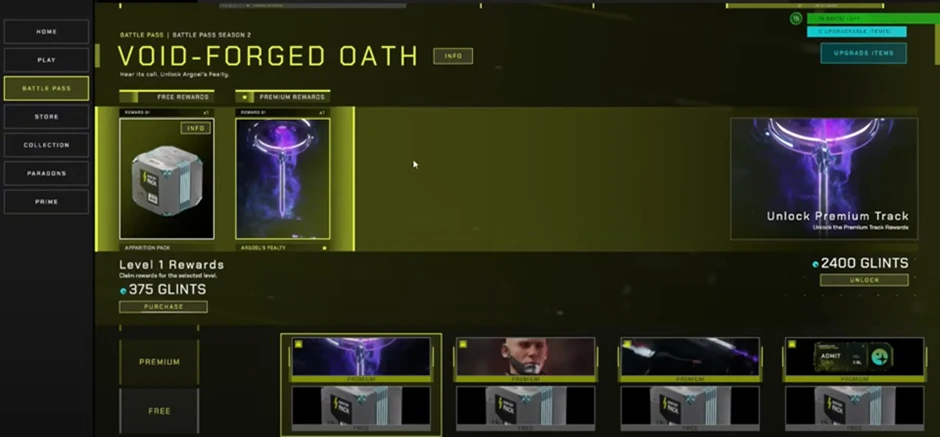
Parallel has been in operation for 8 seasons so far. As the game continues to improve and optimize, we will have a lot to look forward to in terms of the impact it will have on existing TCG card games.
SHRAPNEL: Free Creation FPS Game
Shrapnel is a first-person shooter (FPS) that combines traditional high-quality gaming experience with Web3 technology. Developed by industry veterans who have participated in the development of well-known games such as Halo and Call of Duty, Shrapnel completed an initial financing of US$10.5 million in 2021, with participation from Dragonfly and Three Arrows Capital, and angel investors including Keith Nunziata (Citadel Global Equities) and Jason Zhao (Kleiner Perkins), and subsequent financing of US$27 million.
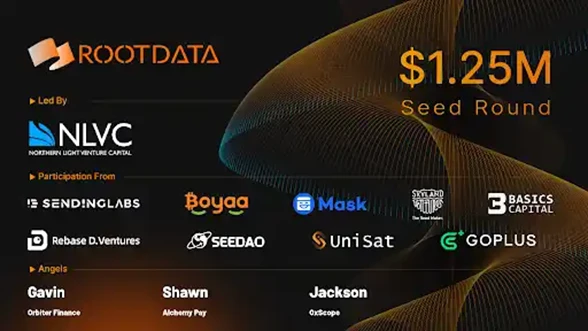
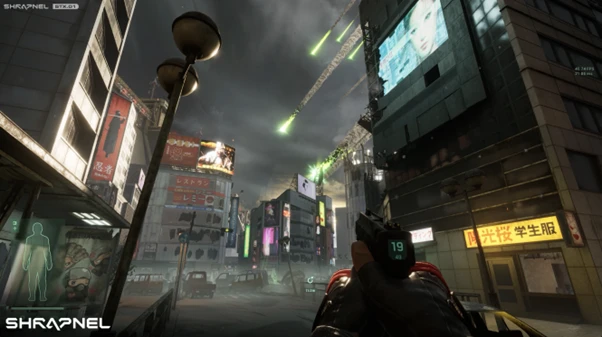
Unlike many blockchain-based games, Shrapnel emphasizes high-quality graphics and a sophisticated gaming experience that is comparable to top traditional FPS games. Most blockchain games are virtual worlds or metaverses, focusing on players free creation and social experience, with fewer in-game combat elements. Shrapnel emphasizes high-intensity combat experience and strategic thinking, and players can get rewards through high-risk tasks. This makes it unique in the blockchain game market.
Shrapnel also provides powerful user-generated content (UGC) tools that allow players to create characters, weapons, maps, etc., and cast these contents into NFTs for other players to use or trade. Shrapnels creation tools are closely integrated with its combat gameplay to ensure that the content created by players has practical uses in the game.

But at the end of 2023, the game studio filed a lawsuit against several investors, claiming that they were trying to seize the companys control and treasury, causing many doubts about this most anticipated game in 2023 and 2024. At present, the internal problems of the company have been resolved, and shrapnel has been launched on Epic, and has received continuous attention from major platforms and game communities. We look forward to shrapel having more performance in the future under the leadership of a strong team that has developed games for Disney, Ubisoft, etc.!
Illuvium: The pinnacle of open-world adventure and combat in Web3
Illuvium is a 3D open world game built on Ethereum L2 (Immutable X) that players can explore and actively shape. The Illuvium Decentralized Autonomous Organization (DAO) developed this game. The game is mainly based on finding and capturing strange beasts called Illuvials. Players can use the collected Illuvials to fight other players creatures. At the same time, players can earn rewards for their success in battle.

Illuvium consists of four games in the ecosystem, including Illuvium Overworld, Illuvium Arena, Illuvium Zero, and Illuvium Beyond. There are five professions in the game: Guardian, Fighter, Rogue, Psion, and Empath. There are also five affinities: Water, Earth, Fire, Air, and Nature (e.g. Earth Psion). In addition, up to two affinities can be stacked and combined to get power-ups. Players save their captured Illuvial NFTs on the blockchain in their crypto wallets. In the game, they store characters in Shards. Shards have different strengths, and stronger shards are able to support more powerful Illuvials. Since the launch of the project, Illuvium has attracted the attention of many web3 players with its rich ecosystem and interesting game settings.

The games innovation is mainly reflected in two aspects. First, Illuvium distinguishes itself from competing dapps by providing high-quality, evolving NFTs and focusing on gameplay and game-making models. It combines elements of classic RPG collection games with popular combat techniques in the Auto Battler genre. In addition, it provides zero gas fees and sub-second transaction speeds through L2 (ImmutableX).
The games team has 71 members, including 15 core members. Co-founder Kieran Warwick has a lot of entrepreneurial experience. He entered Web3 in 2015 and served as the marketing director of an Australian OTC exchange. Later, with the development of DEFI, Kieran entered Web3 again. Co-founder Aaron Warwick majored in computer engineering and physics in college and later served as a game designer for illuvium.
Since the beginning of 2021, the company has completed four rounds of financing, raising a total of US$65 million, including US$12 million in March this year. The team currently has strong financial capabilities.
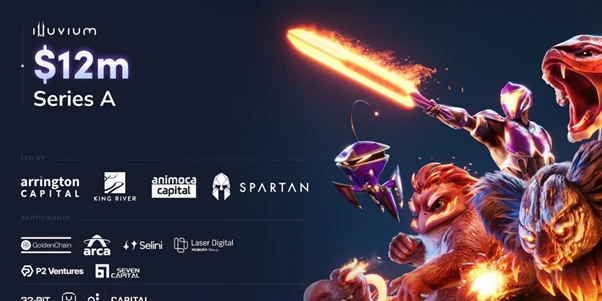
The advantages of the token $ILV derived from this game are mainly reflected in two points: (1) Efficiency: Immutable X uses advanced ZK Rollup technology to achieve fast and low-cost transactions on Ethereum. Compared with the Ethereum main chain, $ILV has obvious advantages in transaction speed and handling fees; (2) Ecological development: With the popularity of the NFT market, the ecology of $ILV is also growing. Many well-known projects have joined Immutable X, providing a strong impetus for its ecological development.
There are currently three main risks in the game: (1) Code security risk: Although Illuviums staking contracts have undergone multiple audits, there are still potential code security risks. At the same time, since the codes of Illuviums games have not yet been made public, their security cannot be determined and they may be threatened by plug-in software in the future; (2) Market risk: The current game market is extremely competitive, and various types of games are constantly emerging; (3) Token risk: As the key governance token of the project, if the price of $ILV fluctuates drastically, it may have an adverse impact on the development and operation of the project.
After 81 trials and tribulations, one can finally obtain the true scriptures.
Just like the 81 difficulties in the Journey to the West, the journey to obtain scriptures is never smooth. The growth path of Web3 games is also full of challenges and opportunities. Although Hamster Kombat faces the challenge of airdrop distribution, it has explored new possibilities in the combination of cultivation, combat and social elements; SERAPH has room for optimization in token economy, but it stands out in the ARPG field with its strong team and innovative game mechanism; although Parallel still needs to solve the problems of UI and matching system, it has successfully attracted a large number of players through science fiction themes and high-quality art; although Shrapnel has experienced internal twists and turns, its wonderful combat design and rich user-generated content are still attracting attention; and even though Illuvium faces security and market risks, its rich ecosystem and high-quality NFTs are still attracting attention. Finally, how to further improve the acceptance and participation of traditional Web2 users will also become a common challenge faced by all Web3 games. Just as every growth of Wukong is inseparable from hardships, Web3 games can only find their own true scriptures in the vast digital world after experiencing wind and rain.
This article is sourced from the internet: PKUBA路SectorScan | Where is the road ahead: A journey to learn from the new generation of Web3 games
Related: Satoshi Nakamotos true identity revealed? But only the HBO documentary director believes it
Original|Odaily Planet Daily Author: jk On October 9, local time in the United States, HBO launched a new documentary Electric Money: The Mystery of Bitcoin, directed by Cullen Hoback, a famous director known for solving puzzles. In the film, the director focused on various hidden clues and evidence and believed that the true identity of Satoshi Nakamoto was Canadian programmer Peter Todd , which triggered a heated discussion among the audience about the identity of Satoshi Nakamoto, the founder of Bitcoin. According to Politico, Todd, 39, graduated from the Ontario College of Art and Design in Toronto and was only 23 years old when the Bitcoin white paper first proposed the idea of a decentralized monetary system. Todd is no stranger to the cryptocurrency community: he is not only a…







